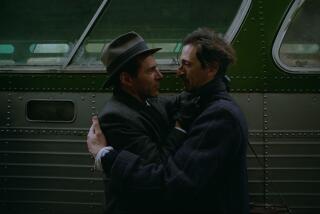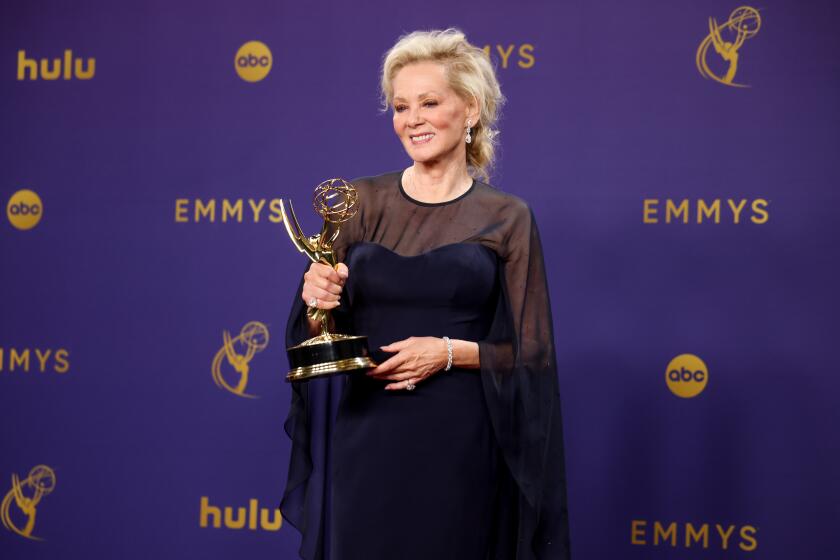With horror, fantasy and superheroes in the conversation, this is turning into one weird Oscar season
It’s awards season! Rejoice, for some of the year’s most dramatic, highbrow films are flooding the theaters — expect lots of British accents. By now everyone knows in their bones what an Award-Winning Film looks like: triumph alongside tragedy; a childhood trauma; often a jingoistic spirit chanting in the background. And pretty uniformly, the stories are noble.
In recent years, a few auteurs and indies have cut through that formula and received awards recognition with such out-of-the box films as “Black Swan,” “Birdman” and “Mad Max: Fury Road.” And the 2017-18 awards season looks as if it may have taken that spirit and run wild with it with more than a smattering of imaginative, unusual and, well, sometimes downright weird stories.
Consider the early December release “The Disaster Artist,” which is a retelling of the making of “The Room,” widely considered the worst movie ever made; “The Killing of a Sacred Deer,” the October release from writer-director Yorgos Lanthimos that is equal parts quirky and sinister; “Get Out,” a horror movie with a message from Jordan Peele that opened early this year. There is also “mother!” the wild fever dream of a film from Darren Aronofsky that drew both raves and jeers from critics upon its release in September, and “Okja,” the Netflix film with a CGI “super pig” at its heart. Throw in “I, Tonya,” a black comedy about ice skater Tonya Harding that breaks the fourth wall; “The Shape of Water,” a fantastical love story from Guillermo del Toro (both films open Dec. 8); and “Logan,” the Wolverine finale film with what a Times film critic called “surprising emotional heft.”
WATCH: Video Q&A’s from this season’s hottest contenders »
“There are a lot of movies where you can see the results everyone wants, and the accolades they’re looking for more than you can feel the movie,” says director James Mangold, who’s hoping his Hugh Jackman-starring “Logan” will find a berth in this year’s conversation. “So many tentpole movies are just a quest for cash, and so-called Oscar movies can be designed to press the buttons of academy members.”
Why now, though? Vince Jolivette, co-producer of “The Disaster Artist,” speculates it might have to do with this summer’s terrible box office. “There’s been lots of reboots and sequels, and no one really showed up to watch them this summer,” he says. “There’s always been unusual movies this time of year, but these are getting more attention because people want something different.”
Part of the shift may have to do with the way films are now competing with complex, long-form television and streaming services, suggests Mangold. “There are a lot of interesting filmmakers doing and attempting to do interesting work,” he says. “The marketplace is no longer satisfied with the same thing from last year, and that’s fueling an atmosphere of more experimentation, and people looking for something that breaks the mold of how we make movies.”
Movies that color outside the lines also are likely to feature a deeper, sociologically relevant layer to them, says Ed Guiney, producer of “Sacred Deer.” “Films that really hit always have another dimension,” he says. “They’re speaking to some kind of zeitgeist or cultural obsession. ‘Sacred Deer’ is a film about a rational man overpowered by forces beyond his control — and that’s a real metaphor for our times.”
Aronofsky believes hitting that zeitgeist moment is tricky, though, because it can take so long for an idea to come to fruition. “We start thinking about these movies two years before they ever get made, and clearly the world has changed dramatically,” he says in an email. “It’s interesting to see … that I wrote ‘mother!’ in the eighth year of the Obama administration and it’s coming out in the first year of Trump’s and how the reactions of that are reflected.”
We start thinking about these movies two years before they ever get made, and clearly the world has changed dramatically.
— Darren Aronofsky
Perhaps filmmakers are innately tapped into cultural forces that express themselves in projects that may not see fruition for years ahead, or perhaps it’s that films that are not merely earnest, heart-rending biopics often come with a deeper layer of meaning that translates no matter when they’re released — or from what culture.
Bong Joon Ho’s charming “Okja,” for example, tackles topics of “consumerism, capitalism and the food industry,” the director writes in an email, but the story itself is about a child and a beloved pet. Director Bong is South Korean and works outside the Hollywood system, which may have something to do with the complex nature of the story — which is neither easy nor simple.
“I believe [South] Korean films are more diverse and dynamic,” he writes. “It’s not unusual for [South] Korean films to be stimulating and intense and not predictable, which makes them uniquely enjoyable.”
If he’s right, the increased focus on diversification of Hollywood and the film academy specifically may lead to even more out-of-the-box thinking, and more films making it into awards contention that aren’t simply the same-old, same-old.
“There are always going to be cookie-cutter movies, I guess,” says Guiney. “The world is thirsting for stuff they haven’t seen before, and talent is drawn to more challenging material they don’t often get to play.”
After all, who wouldn’t prefer a world where a “Disaster Artist” film — about a single-minded mystery man and his wretched cult-favorite film — can end up on awards shortlists?
“There’s always room for the feel-good movie of the year,” chuckles Jolivette. “And if there’s anything this movie is, it’s a feel-good movie. You can’t help but come away feeling motivated and happy.”
More to Read
From the Oscars to the Emmys.
Get the Envelope newsletter for exclusive awards season coverage, behind-the-scenes stories from the Envelope podcast and columnist Glenn Whipp’s must-read analysis.
You may occasionally receive promotional content from the Los Angeles Times.










